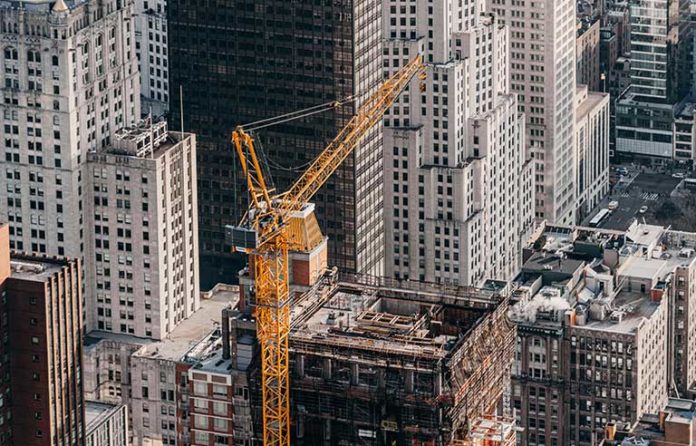New York, the Empire State, is considered as one of the most symbolic cities in the whole world. The city is characterized by its dynamic history, diversity in culture, and high skyscrapers reaching the roofs. Its life is rich in past and present, attracting world-class construction and development practices, all based on its geographical conditions. We will discuss historical development in New York City, the present scenario, and geographical aspects affecting the construction area in this energetic city.
Historical Background of New York
New York City was first settled by Lenape Native Americans. They called the region “Lenapehoking.” European settlers arrived in the early 17th century and, within a few years, the Dutch established a colony called New Amsterdam in 1624. Because of its advantageous location on the Hudson River, the city quickly became a hub of trade and commerce. In 1664, the English took New Amsterdam and renamed it New York in Honor of the Duke of York, who became King James II of England.
However, the city grew massively because it played a vital role in the American Revolution, serving as a military and political centre. New York emerged as a principal port of entry for immigrants by the 19th century when Ellis Island opened its doors in 1892 to handle the exponentially growing increase in people wishing to find their better selves across the waters into America. The completion of the Erie Canal in 1825 connected New York City with the Great Lakes and Midwest, enhancing the economic and industrial development of the city.
Rapid urbanization and rapid technological progress underscore the late 19th century and early 20th century in New York. Iconic landmarks such as the Brooklyn Bridge (1883) and the Statue of Liberty (1886) all have contributed towards the establishment of New York as the stronghold for architects and cultural institutions. With the rise of skyscrapers, buildings such as the Empire State Building (1931) can be seen as a highlight of several decades as the world’s tallest building.
New York City continued growing during the 20th century and eventually became a global financial center, with Wall Street at its heart. Cultural movements such as the Harlem Renaissance, abstract expressionism, and punk rock emerged from the city but couldn’t change its strong reputation as a melting pot of different cultures.
New York Today: A Metropolis in Constant Transformation
Today, New York City is a metropolis that comprises five boroughs: Manhattan, Brooklyn, Queens, the Bronx, and Staten Island. It is the home to over 8 million residents, outgrowing even the enormously large city of Los Angeles. The city boasts of over 800 languages that are spoken within its boundaries and serves as a global hub for finance, media, entertainment, and technology.
However, New York has some problems related to becoming a very populous urban area. Affordability of housing and homelessness are some of the ongoing issues together with congestion and environmental concerns. The COVID-19 pandemic hugely impacted New York’s economy, as many businesses temporarily shut down, and the real estate market in the city faced a decline. While the city has rebounded with strong resilience, there are many efforts to eliminate economic inequality and improve the problems of city life.
New York has increasingly been used as a model for sustainability, with both projects in combating the effects of climate change, such as green buildings, and adopting renewable energy. It has also invested greatly in public transportation infrastructure to make commuting more efficient and environmentally friendly.
Geographical Conditions and Their Impact on Construction
New York City, influenced by unique geographical conditions, impacts the overall construction landscape. Situated along the Hudson River, the city’s territory presents a set of opportunities and challenges for new construction. Here are the reasons in detail:
1. Topography and Land Availability
The five New York City boroughs stretch over several islands: Manhattan, Brooklyn, Queens, Staten Island, and the Bronx-the only borough on the mainland. The geography of the city ranges from coastal areas along the river to high ground in parts of the Bronx. Manhattan is especially flat, making it a good choice for high-rise construction. However, given the dense land mass, construction is mostly vertical as people’s number is increasing and moving upwards by the construction of buildings.
The areas such as Staten Island and parts of Queens are less congested due to the open area and lighter intensity developments. However, they are vulnerable to flooding, which restricts the type of construction projects that can be undertaken.
2. Soil and Bedrock Conditions
New York City’s soil and bedrock condition are essential to the feasibility of construction projects. Much of this city has a relatively hard granite foundation, providing a stability that is said to form an adequate base for high-rise buildings and skyscrapers. This is especially true in Manhattan, where the bedrock is often drilled deep into support gigantic structures.
However, in Brooklyn, Queens, and other areas, clay, sand, and silt predominate in the soil. In such areas, additional preparation is usually necessary before actual construction can start. Foundation work, as well as piling and reinforcing, is usually much more difficult and costly in these areas.
3. Flooding and Rising Sea Levels
One of the most urgent geographically-related challenges in constructing New York is the threat of flooding, especially in coastal districts. Even Lower Manhattan and the sections along the East River are among those with the greatest risk for flooding from storm surges, hurricanes, and rising sea levels. As a response, the city has enforced strict building codes which force new developments in flood-prone districts to have structures raised above certain heights.
With indications of climate change being brought upon the world and sea levels projected to rise, flooding coastlines with more frequency and high severity, innovative solutions such as raised infrastructure, flood barriers, and resilient building materials are needed for construction in specified neighbourhoods.
4. Transportation Infrastructure and Construction Zones
Probably the most defining feature of New York’s geography is the complex transportation infrastructure. The many subways, bridges, tunnels, and roadways all make it easier for millions of people to move around. However, the networks can also complicate a construction project. A project involving major roads, railways, or subway lines often has to involve coordination with city authorities so that there is little disruption to traffic flow during the day.
However, construction zones in New York City usually demand high safety measures, such as scaffolding and barriers due to the very dense urban environment. Regulations are strict, and the construction workers need to go through stringent safety procedures to protect the workers and public alike.
5. Environmental Considerations and Sustainability
Sustainability was now in the consideration of New York construction projects due to the city’s geographical location and increasing environmental concerns. The city had enacted what it referred to as the “Green Building Law,” which requires certain buildings within the city to meet green standard requirements, particularly in energy efficiency, water conservation, and use of sustainable materials.
Reduction of carbon footprint: The city has also aimed at reducing its carbon footprint through energy-efficient buildings. “Green roofs,” renewable energy installations, and climate-resilient construction techniques are gaining attention as New York works towards a successful goal of reduction in greenhouse gas emissions, and this paints a more sustainable urban environment.
Conclusion
New York City, with its deep historical roots, is evolving and adapting to the needs of its diverse population. From its colonial beginnings to its status as a global leader today in finance and culture, the city’s historical evolution reflects its capacity to reinvent itself in response to internal and external challenges.
The geographical conditions of the city significantly impact its construction landscape. Diverse topography and soil conditions, as well as the challenges posed by climate change, need thoughtful planning and innovative solutions. Thus, since the growth of the city is still going on, it needs to traverse this sensitive balance with regard to its developments that are sustainable and resilient. These factors would mold future constructions in New York, maintaining the characteristics of the city’s skyline as symbolizing historicity while also integrating forward-thinking ideas for urban developments.

